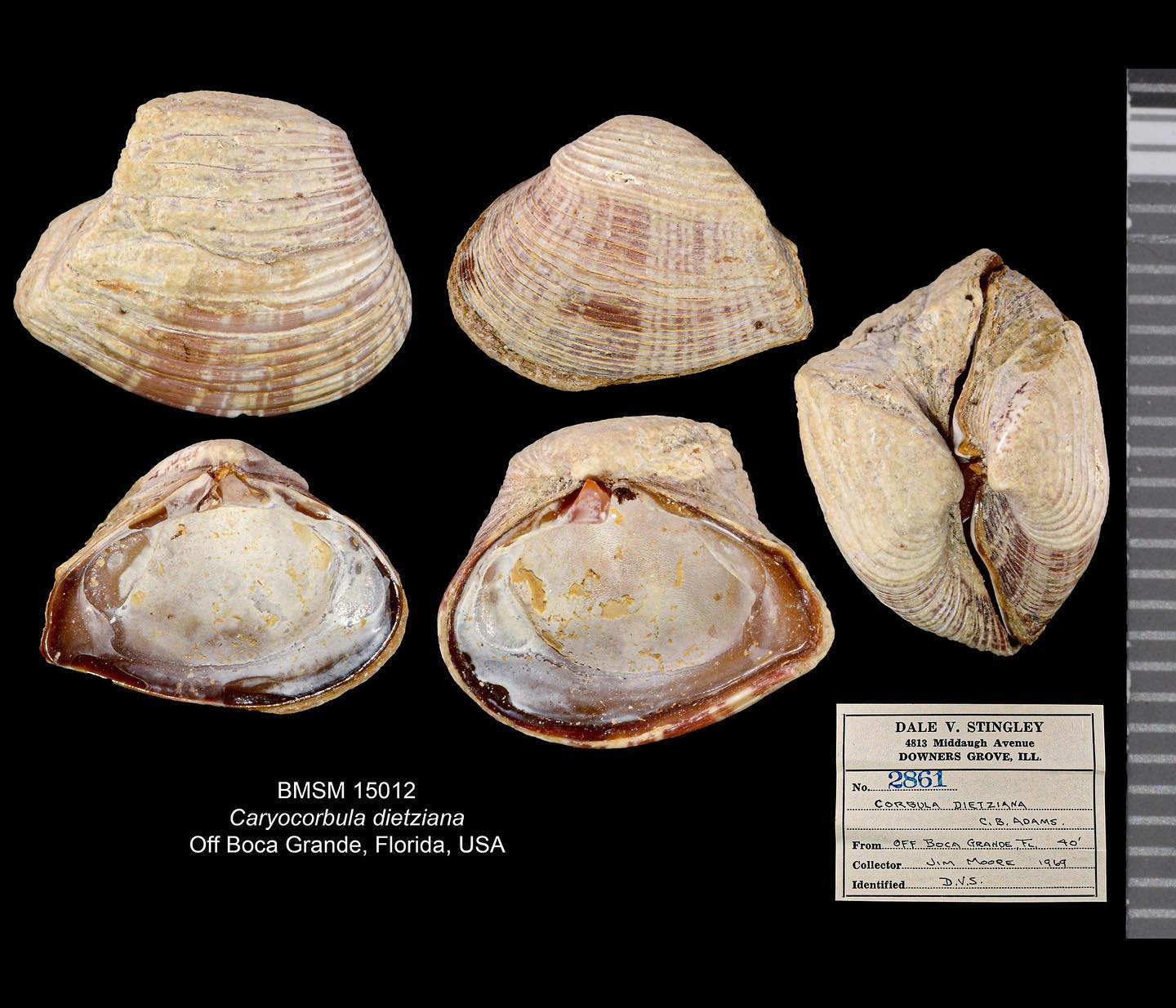Summary:
1. The Dietz Rose Corbula is a fascinating and unique species of small bivalves.
2. It belongs to the Corbulidae family, also called Basket Clams.
3. The shell of the Dietz Rose Corbula is distinct, with a gnarly appearance and varying colors.
4. It is found along the coasts of North Carolina, Florida, and the northern Caribbean region.
5. The species is studied and researched by The Shell Museum, providing valuable information.
The world of marine life is teeming with unique and fascinating creatures, each with its own story. Among these remarkable beings is the Dietz Rose Corbula, a small bivalve that captivates zoologists and nature enthusiasts alike. With its intriguing characteristics and uncommon taxonomy, the Dietz Rose Corbula invites us to delve into the wonders of the underwater world.
Belonging to the Corbulidae family, commonly known as Basket Clams, the Dietz Rose Corbula has distinct features that set it apart from its relatives. Measuring a mere 15 mm, or 0.6 inches, this tiny bivalve showcases a shell with a posterior ridge, a typical trait of the Corbulidae family. However, what truly catches the eye is the peculiar growth pattern of its shell.
Unlike many other species within the Corbulidae family, the Dietz Rose Corbula’s suitable valve is larger than the left one. This discrepancy becomes more pronounced as the clam ages, giving the shell a gnarly appearance. Imagine stumbling upon a collection of these shells on a beach, their distorted shapes and delicate hues drawing you closer to examine their intricate details. Some shells may bear a rosy color, others might be whitish or cream-colored, and occasionally you may spot flecks of gray or light-brown adding to their overall beauty. If you take a closer look at the inner surfaces of the valves, you may notice a hint of brown near the margins, providing an extra charm to these tiny natural treasures.
Now, let’s take a journey to explore the habitat of the Dietz Rose Corbula. This captivating bivalve species can be found along the coasts of North Carolina, embracing the warm waters of Florida’s east and west coast and extending its reach to parts of the northern Caribbean region. Its distribution is a testament to the adaptability and resilience of marine life, offering a glimpse into the intricate ecosystems and interconnections of these diverse regions.
While the Dietz Rose Corbula’s physical characteristics may captivate our attention, it’s also essential to recognize the valuable research and conservation efforts focused on this species. The Shell Museum, a renowned institution dedicated to studying and preserving marine life, has taken a particular interest in the Dietz Rose Corbula. They provide extensive information regarding its taxonomy, biology, and ecology. Researchers and enthusiasts can access this wealth of knowledge, allowing us to better understand and appreciate the intricate web of life beneath the ocean’s surface.
The Dietz Rose Corbula reminds us of the extraordinary diversity within the animal kingdom and the wonders of our natural world. Its unique shell and intriguing growth patterns testify to the nuanced adaptations in marine life. As we delve deeper into zoology and the study of nature, we are constantly reminded of the awe-inspiring intricacies that make up our planet’s ecosystems.
Next time you stroll along the beach, keep your eyes open for these tiny treasures. Take a moment to marvel at the gnarled beauty of the Dietz Rose Corbula’s shell, and let it inspire you to delve into the mysteries of the natural world. There is so much more waiting to be discovered. Through the lenses of zoology and zoos, we can continue to unravel the secrets of nature and appreciate the unique and captivating creatures that inhabit our world.
*****
Source Description
The Dietz Rose Corbula, Caryocorbula dietziana, is a small (reaching 15 mm, or 0.6-inch) bivalve of a family notorious for their complex and confusing taxonomy, the Corbulidae, also known as Basket Clams. Its shell has the posterior ridge typical of the family. Like in most other corbulid species, the correct valve is larger than the left one, and this difference is accentuated in this species as the clam grows older, which renders a gnarly aspect to those shells. The Dietz Rose Corbula may be rose, whitish, or cream-colored, sometimes showing gray or light brown dots. The inner surfaces of the valves may be tinged brown near the margins. The species is found from North Carolina through both coasts of Florida and parts of the northern Caribbean region. More? ShellMuseum.org


